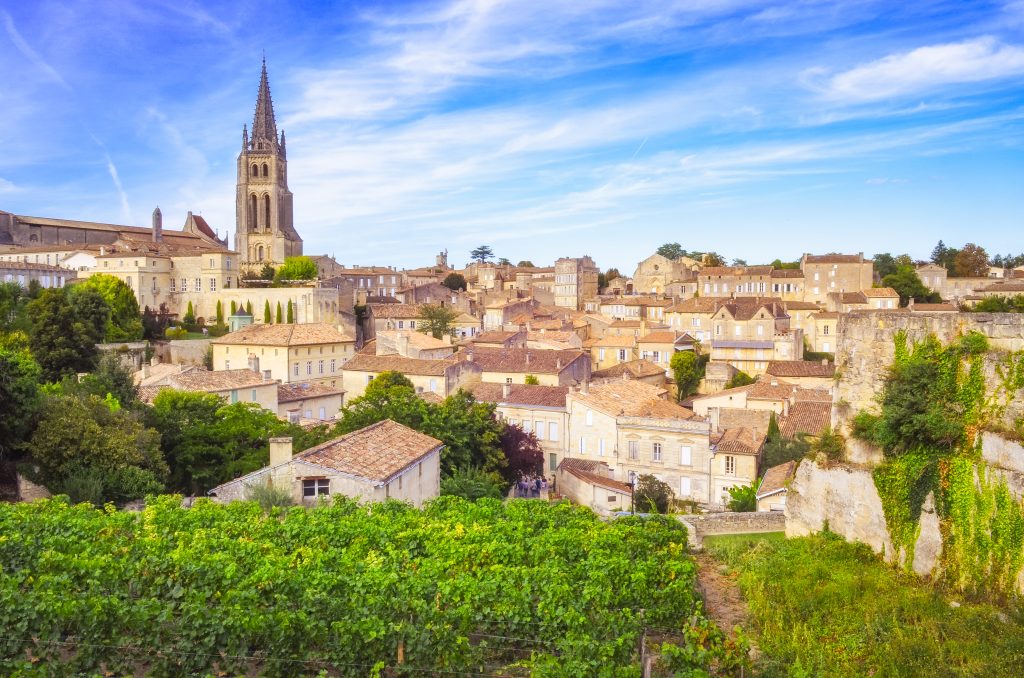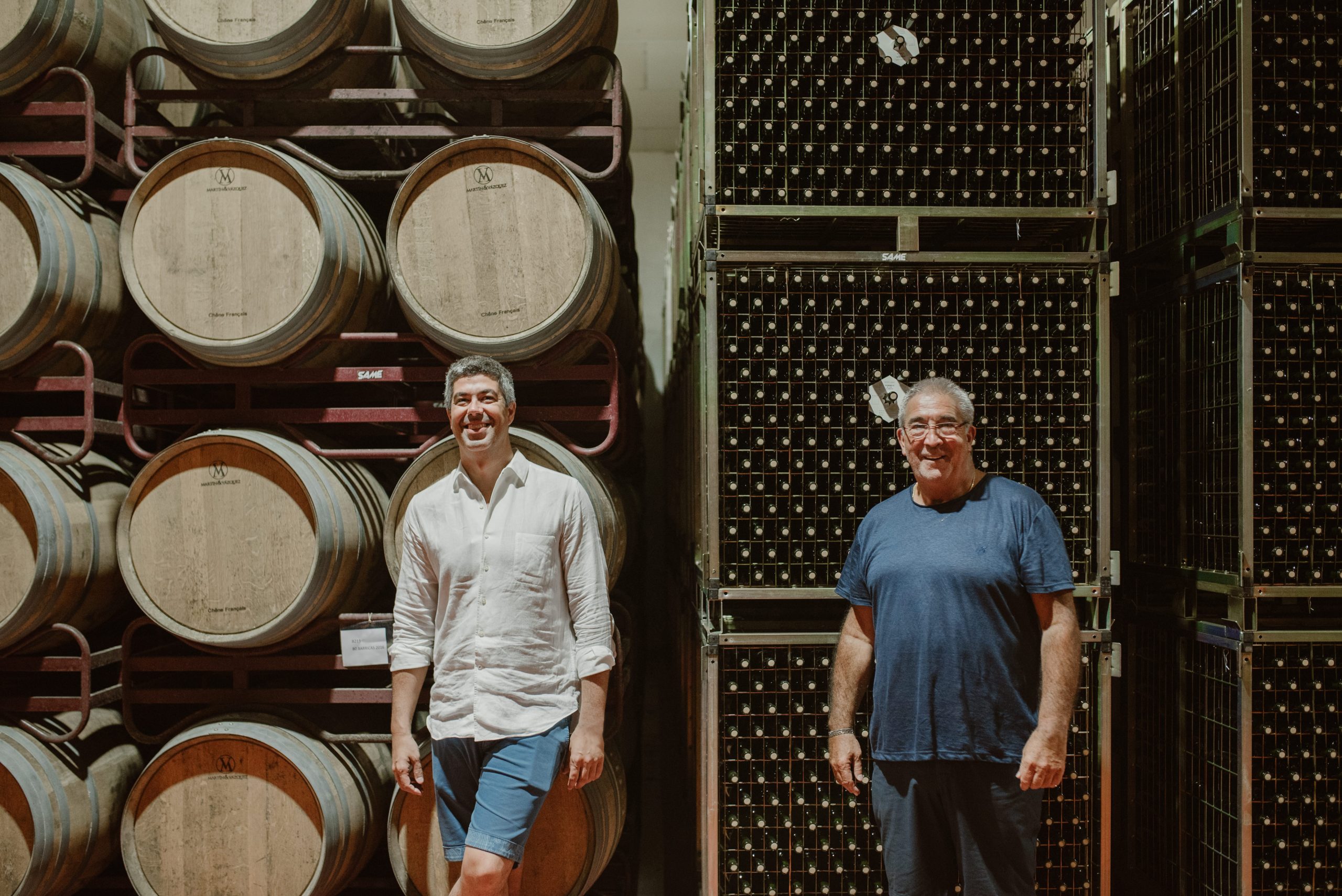Bordeaux château are doing it for themselves
If you’ve followed the fortunes of Bordeaux, it can’t have escaped your notice that this year’s primeur campaign was ‘complicated’ at best and while it works for many estates, properties with limited brand identity, easily substituted and in direct competition with each other are suffering. Many are sitting with previous vintages building up in their vats, wines that would traditionally be sold through negociants. So if La Place isn’t working for this silent majority, what are they to do?

D2C
Visitors to Bordeaux are seduced by the value they find here – so if consumers like the wine and see it a great value, why don’t Bordeaux wineries sell to them directly?
Bordeaux is big, with a lot of wine to sell and a big world to sell it to. Sadly, family and smaller businesses don’t have multi-lingual staff able to sell wine directly to international distributors let alone direct to consumers. And don’t get me started on the admin and paper work! Merchants have successfully done this for them for years and winemakers have let them, concentrating on the challenges of production rather than marketing.
Traditionally, Bordeaux vineyards working through La Place would even struggle to tell visiting American where in the US they can find their wines – they just don’t know.
But things are changing – merchants are less jealously protective of their markets, having the producer on board to promote their wine is key, consumers and distributors want to meet the producer, get to know them, learn their vineyard stories.
And Bordeaux’ booming wine tourism provides an opportunity for wineries to create closer links with their final consumer.
It’s not only consumers who enjoy buying wine directly from a producer, winemakers like to know who is drinking their wine too. They are always thrilled when I send a photo of their wine I’ve enjoyed in some far flung location. Try it with your favourite wine, even better post on social, nothing like sharing the love!
Direct to consumer sales – competition or complement?
Direct sales are not necessarily in competition with negociants, margins are protected, prices aren’t always cheaper at the property. The market is limited, selling and delivering directly over a website is possible within Europe – it is already a huge market but it’s more complicated to export. Shipping across the Atlantic and, particularly post-Brexit, the Channel, is complicated – but there are solutions.
Margins are generous but volumes are small and Bordeaux properties are large (average 20 ha but hugely diverse). What might work for a boutique winery of 5ha won’t work if you have 50ha. You need volume sales to survive, which La Place has delivered. But it takes work to make it work. Direct sales need multilingual staff with organisational and interpersonal skills and time to prepare and pack orders. Even with an excellent e-commerce website there’s only so much you can automate and, given how difficult it is to find staff right now – did I mention paper work?
Bordeaux wine clubs
Bordeaux producers are therefore looking at the American Wine Club model with envy. Here, consumers buy directly from the winery with higher margins and closer relationships. It’s definitely tempting to have clients signing up, guarantying a certain purchasing volume every year in exchange for special offers, extra bonuses, invitations to events, etc. And that all important feeling of belonging to a community.
However, membership needs to be constantly maintained and renewed. Speaking to American producers – with a few excellent exceptions – wine club membership can be short-lived.
The interest from wineries is there, however. Great Wine Capitals, an association of leading wine tourism actors across 12 ‘wine cities’, recently organised a seminar in Bordeaux to examine the challenges of creating a wine club. It was a sell-out.
There are direct-from-producer wine clubs and direct sales sites in Bordeaux and it appears to be a growing trend. For example, Chateau Giscours and Château George 7 both mentioned they’re looking at creating clubs thanks to a faithful following of visitors to their properties.
Le Club des Fous de Cérons was born in 2012 when French wine journalist Jacques Dupont called Caroline and Xavier Perromat crazy (fous) when they took over the family estate. Club members are mainly visitors who have bought more than €200 of wine with a first purchase and become friends, following the adventure of the transformation of the property. Membership has grown organically, monthly mailings keep members up-to-date with news of renovations and projects – of which there are many! They receive exclusive special offers that can be redeemed via their e-commerce site or by telephone, which they love as it keeps them in touch.
Invitation only
Classified growth in Saint Estèphe Chateau Cos d’Estournel has a very chic wine club, as you would expect for a chateau owned by the Luxury hospitality Reybier group, with Reserve hotels and residences across Europe. Visitors to the chateau are invited to join the club thanks to a chic card with a unique membership code. Benefits include invites to private dinners, events and tastings across the Reybier properties.
Owned by the American Adams family since 2004, Château Fonplegade also excels in hospitality. The Chateau welcomes members to the property for private tastings and events, not only are guests welcomed with a glass of white wine from their Napa vineyard and tastings are accompanied by a cornucopia of cheeses and cold cuts, they also leave with warm homemade chocolate chip cookies! Since 2007, an allocation membership is offered to visitors to the property and to referred friends. Members span the globe, with American members having the added advantage of their wines being temperature controlled, overnight delivered from stock held in the USA. It’s a unique solution to the shipping conundrum for Americans, that represent 70% of their members.
Partner Content
Château Bauduc in the Entre-Deux-Mers has a similar system. They ship their wines to the UK so British visitors to the Château, or to their e-commerce site, can order their full range of wines directly and they will be delivered to their door with only local delivery fees and no customs issues – which post Brexit seems more complicated than shipping to the US! There’s a fascinating page on the web site that gives a detailed breakdown of exactly where your money goes when you buy wine and how little of it normally ends up in the pocket of the producer.
Members receive regular email updates, special offers, first call on rental of their farmhouse in the vines and can even join the château fantasy football league!
Multi properties
Bordeaux properties often produce just a few wines. A larger range makes a wine club more attractive. Owners with several properties they can group together have an advantage.
Grouped under Vignobles K, the Kwok family has seven wineries across four right bank appellations. This includes Saint-Émilion Classified growth Château Bellefont-Belcier, two other Saint Emilion Grand Crus, a Pomerol, a Castillon and a Lalande de Pomerol, Enclos de Viaud, that also produces a white and a rose. Their Bordeaux Wine Club members sign up to either 6 or 12 bottles from different vintages through two to four shipments per year. Benefits include discounts on selected wine purchases with exclusive allocations of wine on release and access to library wines. They have preferential bookings at the estate hotel, guests houses and events and complimentary tours and tastings.
In 1989, Jean Guyon started with 2ha, now he has 185 ha and 9 vineyards across the Medoc grouped under Domaines Rollan de By. His wine club aims to make these wines accessible to both connoisseurs and beginners. An invitation to the club is issued with a purchase of 24 bottles via the site and an access code opens the door to masterclasses, events and deals on the website.
Direct online sales
More and more Bordeaux chateaux have e-commerce sites where you can buy directly without a membership, although if you are outside of Europe you might want to check about shipping details. Below are a few favourites.
The Entre-Deux-Mers is a good place to start thanks to the wide range of wines you’ll find there. Château Lestrille and Château Thieuley are favourites, both offering red, white, rosé, clairet and crémant wines.
On the left bank,Château Paloumey in Haut Medoc also sell wines from their neighbouring properties, Chateau la Besanne in Margaux and Chateau la Garricq in Moulis. Their guide allows a selection by wine by style, appellation, vintage and even food matches. Also in Moulis, Château Branas Grand Poujeaux sells directly via their site
In Sauternes Château Guiraud has an online boutique for its dry and sweet wines and delivers to over 50 countries.
On the right bank Chateau George 7 in Fronsac sells on-line and delivers across Europe, to the USA and works with a distributor in the UK so visitors get the best possible deal. Chateau Guibeau sells their range of organic wines from Puisseguin Saint-Émilion and Castillon Côtes de Bordeaux on their site, including their delicious 100% Malbec.
Vignobles Cap de Mourlin sell wines from across Montagne Saint-Émilion and their classified Saint-Émilion growths, while fellow classified growth Chateau de Ferrand is available online too (although you’ll have to go to the chateau boutique for one of the personalised Bic pens!).
International reach
Gonzague and Claire Lurton have five estates between them in Bordeaux and in California and you can source all their wines on their site including the Orange wine and Ceres, Claire’s no added sulphur wine. Wines are available for delivery in both the US and Europe.
Further south in Pessac Léognan, the on-line store at Château Malartic La Graviere has an international offer with red and white wines from their two Bordeaux vineyards alongside the wines from their Argentinian vineyard Bodega Diamandes and wines accessories. I recommend their recipe book.
Bordeaux is struggling, and La Place might not be fulfilling everyone’s expectations but properties across the region are finding a way to create that all important connection with and sell to their fans.
Related news
Bordeaux’s 'Oktoberfest' – La Place’s ‘Riesling week
Domaine de Baronarques kicks off La Place’s hors Bordeaux campaign
How is La Place’s Hors Bordeaux autumn collection shaping up?




